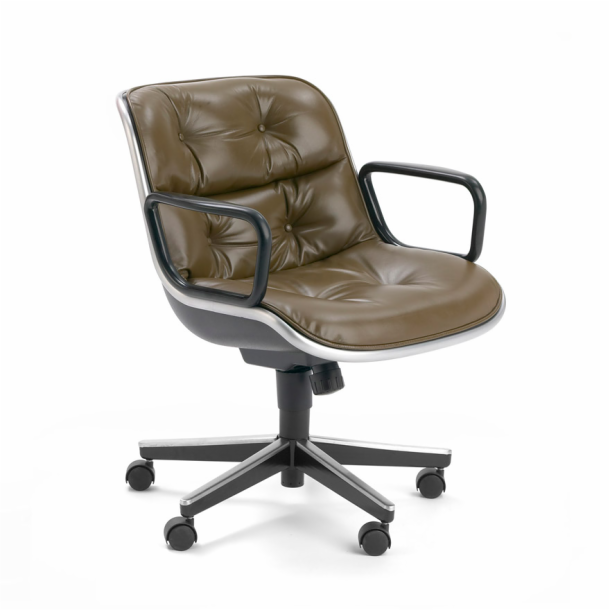
Charles Pollock is the designer behind Knoll’s famous Pollock executive chair, which became a staple in offices in the mid 20th century. Pollock died last month in Queens, New York at 83.
Charles Pollock, the designer behind one of the most popular office chairs of the 20th century, died last month in a fire in the Queens, New York apartment he used as a studio. He was 83.
He’s best known for the Pollock executive office chair he designed for Knoll Studios in 1963, which features a single aluminum band running around the perimeter that holds the chair together both structurally and aesthetically. Pollock never sought the celebrity status of many of his colleagues and disappeared for decades after the early 80s. He resurfaced just last year when a North Carolina furniture maker tracked him down in hopes that he’d be interested in designing for them.
One of the forefathers of midcentury design, Pollock was known for comparing his pieces to luxury cars and women, according to Fastcodesign.com.
When the New York Times asked about the staying power of his Pollock Chair last year, he responded:
“Call it a personality. It’s like a woman who is beautiful when she’s 19 and beautiful when she’s 45. She might be older, but she’s still beautiful.”
Here we rounded up his best advice:
1. Build to sell: Pollock was pragmatic about his work; his goal for the chairs he created was that people would buy it and it would make a profit. Every designer has to be concerned about business. “Just like if you buy a brand-new Porsche and you just love that car and you get in and you want to drive it, I want people to love to sit in my chairs. You gotta want the people to buy it because they love it,” he told FastCo last year.
2. Keep it simple: Pollock appreciated simple design featuring continuous curved lines, according to Bernhardt Design. He wanted his pieces to be attractive, but also affordable and easy to assemble. While his pieces were technically advanced, they were straightforward enough to manufacture at a reasonable price.
3. Take your time: The famed Pollock chair, the second chair he created for celebrated designer Florence Knoll, took five years to perfect as Pollock tweaked the structure with each new prototype he created. Eventually, the chrome and leather executive chair became a mainstay in offices in the 1960s, according to the New York Times. It is still produced by Knoll today.
4. Design for the soul: Despite the fact that he never really stopped creating, Pollock fell off the radar after 1982 when he released his Penelope chair for Giulio Castelli, one of the first office chairs to include an ergonomic “knee lift,” according to the New York Times. But fame wasn’t a priority for him. He never worked for a major corporation and didn’t seek the same sort of name recognition that other celebrity designers went after. Creating things that were both beautiful and useful gave him a good feeling in his soul. He approached chair design the same way he approached sculpture, and coincidentally, the Pollock Chair has been on display at the Metropolitan Museum of Art, Louvre and The Smithsonian Institute
5. Don’t stop creating: After the release of the Penelope chair in 1982, nobody heard much about Pollock. But he was still busy creating, which is not surprising for a self-described workaholic who took his first job at the age of 15, working on the production line at Chrysler. Recently, Jerry Helling, head of North Carolina furniture maker Bernhardt Design, decided to track him down, thinking it would be amazing for the iconic designer to create something for Bernhardt. In 2012, Bernhardt released the CP Lounge Chair, a sleek, contoured design that’s earned favorable reviews and a Red Dot award from the international design competition. “To keep the edge, you just keep doing something new,” he told FastCo.





